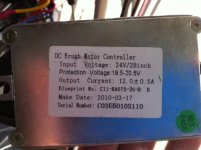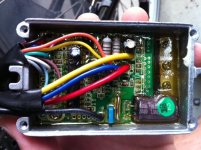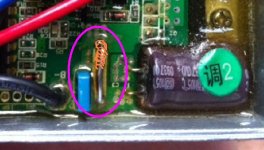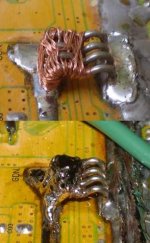Hi All
I am totally new to ebikes and have searched for a straight answer on this but as yet have been unsuccessful.
BIKE: Montego city bike with brushed, 200W, geared front hub motor and 24V Panasonic 11.4ish Amp Hour Li-ion battery
PROBLEM: We live in a hilly area and when climbing hills (after about 30-60 sec) the assistance drops significantly until you stop the motor and restart. After the restart, it will have full power for about the same amount of time and then drop again. I have put a multimeter on the power wires going to the motor from the controller and the voltage is dropping from a steady 26ish volts to around 16. Battery voltage is stable and good at around 26V.
I imagine it might be some sort of current limit to protect the battery or controller, but can someone confirm that this is the case please?
Also, what can be done about this? I would ideally like it to stop reducing the assistance like this as its a real pain when trying to climb our hill home, but will that kill the battery by drawing too much current?
I am happy to change controllers if this will fix the problem, just need a few ideas on what to do first.
I have attached some pics of the controller if that helps.
Thanks a lot in advance!!!
I am totally new to ebikes and have searched for a straight answer on this but as yet have been unsuccessful.
BIKE: Montego city bike with brushed, 200W, geared front hub motor and 24V Panasonic 11.4ish Amp Hour Li-ion battery
PROBLEM: We live in a hilly area and when climbing hills (after about 30-60 sec) the assistance drops significantly until you stop the motor and restart. After the restart, it will have full power for about the same amount of time and then drop again. I have put a multimeter on the power wires going to the motor from the controller and the voltage is dropping from a steady 26ish volts to around 16. Battery voltage is stable and good at around 26V.
I imagine it might be some sort of current limit to protect the battery or controller, but can someone confirm that this is the case please?
Also, what can be done about this? I would ideally like it to stop reducing the assistance like this as its a real pain when trying to climb our hill home, but will that kill the battery by drawing too much current?
I am happy to change controllers if this will fix the problem, just need a few ideas on what to do first.
I have attached some pics of the controller if that helps.
Thanks a lot in advance!!!





